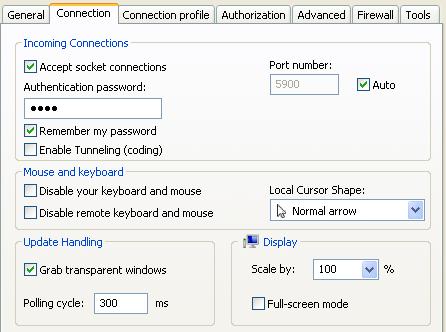Troubleshooting “UltraVNC Authentication Rejected”: A Comprehensive Guide
UltraVNC is a popular remote desktop software that allows users to access and control a computer remotely. However, some users may encounter the frustrating “UltraVNC Authentication Rejected” error while trying to establish a remote connection. This error indicates that the authentication process has failed, preventing remote access. In this blog post, we will provide you with a comprehensive guide to troubleshoot and resolve the “UltraVNC Authentication Rejected” error, allowing you to connect to your remote computer smoothly.
Understanding the “UltraVNC Authentication Rejected” Error
When attempting to establish a remote connection using UltraVNC, you may receive the following error message:
“Authentication rejected, reason: unknown user name or bad password.”
This error message indicates that the authentication process has failed due to either an incorrect username or password.
Step-by-Step Troubleshooting Guide
Verify User Credentials
Ensure that you are using the correct username and password to log in to the remote computer. Double-check for typos, uppercase/lowercase letters, and any special characters that might cause authentication issues.
Check UltraVNC Server Configuration
Review the UltraVNC Server configuration settings on the remote computer to ensure that the username and password are correctly set. Make any necessary adjustments if the settings do not match the credentials you are using to connect.
Confirm Firewall and Security Settings
Check the firewall settings on both the local and remote computers to ensure they are not blocking UltraVNC traffic. UltraVNC uses TCP port 5900 (by default) for communication, so ensure this port is open and accessible.
Enable Authentication
Ensure that authentication is enabled on the UltraVNC Server. Open the UltraVNC Server settings and make sure “VNC Password” or “Windows Login” is enabled, depending on the authentication method you prefer.
Allow Loopback Connections (Windows)
If you are trying to access the remote computer using “localhost” or “127.0.0.1,” ensure that UltraVNC allows loopback connections. In some cases, loopback connections might be blocked, resulting in the “Authentication Rejected” error.
Reset UltraVNC Password (Windows)
If you are using “VNC Password” authentication and have forgotten the password, you can reset it. Navigate to the UltraVNC folder on the remote computer, find the “winvnc.exe” file, and run it with the “-password” parameter to reset the password.
Verify Windows User Privileges
For “Windows Login” authentication, ensure that the user account you are using has the necessary privileges to access the remote computer. Check the user’s permissions, especially if you encounter the error while trying to log in with a non-administrator account.
Restart UltraVNC Services
Try restarting the UltraVNC services on both the local and remote computers. A simple restart can often resolve temporary authentication issues.
Experiencing the “UltraVNC Authentication Rejected” error can be disheartening, but with our comprehensive troubleshooting guide, you can quickly identify and resolve the issue. By verifying user credentials, reviewing UltraVNC Server configurations, checking firewall settings, enabling authentication, and allowing loopback connections, you will successfully overcome the authentication rejection hurdle.
Remember to maintain secure authentication practices, and if you reset passwords, ensure they are strong and unique. With the “UltraVNC Authentication Rejected” error resolved, you can once again enjoy seamless and secure remote access to your computer, making remote collaboration and support a breeze.

